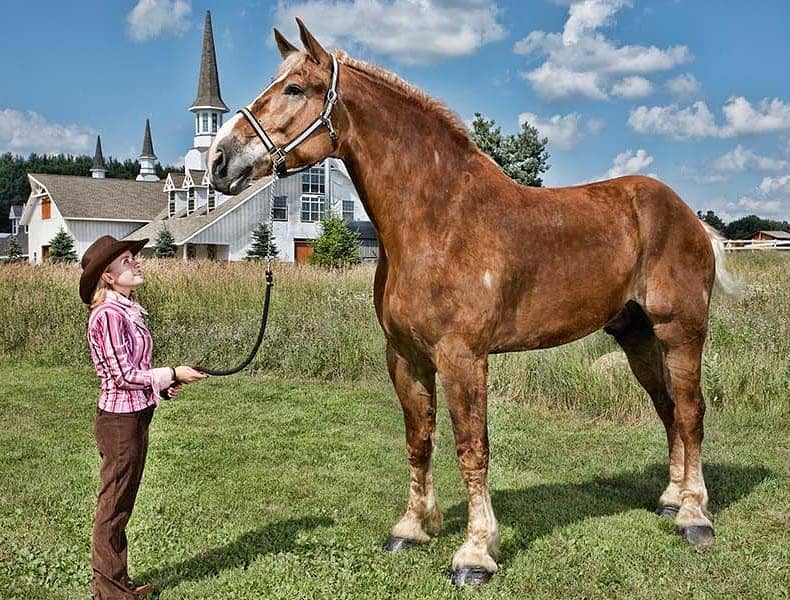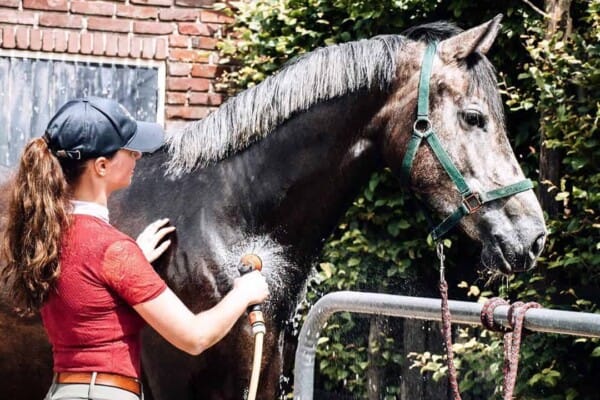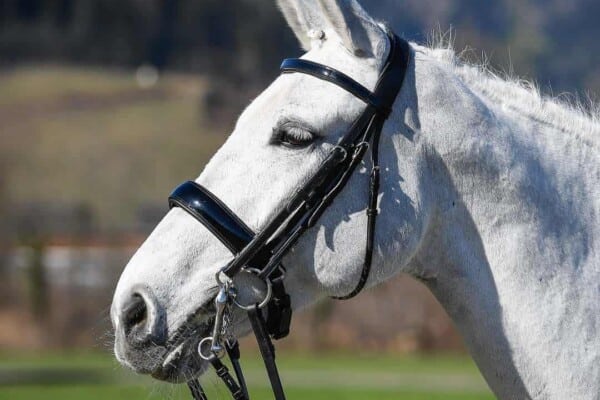Whether you’re buying a horse for yourself, for your child, or for someone else, it’s important to know what size of horse that you should get. Unfortunately, it’s not always as simple as just walking to a farm and picking out one that looks like a good fit.
While most people selling horses should be informed enough to let you know what size of horse is ideal for you, this isn’t always the case. For that reason, it’s a good idea to make sure that you know for yourself what horse is the best size.
Generally, horses should be big enough to carry someone about 20-25% of their total weight. However, there are a lot of other factors that you should consider when you’re buying a horse. Your fitness level, experience riding, the age and health of your horse, and what you’re planning to do with it all have an impact on what size of horse you should get.
In this article, we’ll explain some of the different factors involved in deciding the size of horse that you should get.
Choosing a Horse Based On Your Weight
The first thing that most people take into consideration when buying a horse is their own weight.
However, weight isn’t always the main thing to consider when buying a horse. In fact, unless you plan to be taking the horse on fairly intensive activities, weight might not be the primary consideration at all. This is especially true if you’re first starting to learn how to ride a horse.
In this case, since your horse won’t be doing any difficult or high-intensity activities, weight isn’t the main thing to consider.
If you’re just going to be riding your horse at a mild-to-moderate (a walk or a trot) speed, then your horse should be able to handle about 25% of its weight – as long as it’s fit and healthy.
If you have developed a significant level of balance while riding your horse, then that means that you’ll be less of a burden for it. If you are comfortable riding at all three gaits, and you can do this without using the reigns, then your horse won’t have to compensate for your weight as much.
Considering Extra Weight
Another thing to consider is the weight of your saddle, your saddle pad, and anything else that you might have your horse carrying.
Remember, your horse shouldn’t be carrying more than 25% of its total weight. This means that your saddle and saddle pad will contribute a significant amount to the weight your horse is carrying.
For example, if you weigh 150 pounds, then the minimum weight of a horse you should purchase would be 600 pounds. However, if you’re also carrying a 45 pound saddle, this would increase the total weight to about 195 pounds. This means your horse should weigh a minimum of 780 pounds.
Figuring Out the Weight of Your Horse
In an ideal world, the best way to figure out the weight of your horse would be to just put it on a scale. Unfortunately, the only practical way to do this is to use a livestock scale and livestock scales aren’t very common.
It’s quite likely that you’ll be buying a horse from someone who doesn’t have access to a livestock scale, which means you’ll have to figure out their weight manually. There are a couple of ways to do this.
Use a Horse Weight Tape.
The next-easiest way to estimate the weight of your horse is by using a weight tape. These can be found pretty easily; chances are anyone selling you a horse will have one.
The horse weight tape has a number of markings on it that will allow you to discern the weight of the horse. Ask the person that you’re buying the horse from to give you some assistance if you’re unsure. Remember, horse weight tapes generally only provide an estimate, and the end result is generally off by one or two hundred pounds.
When using a weight tape, you’ll want to err on the side of caution. Since the measurement can be off by up to 200 pounds, it’s important to get a horse that checks out to be at least a hundred pounds heavier than what you need.
Use measurements and math. You can do the same calculations that the horse tape does for you without actually using the equipment. Doing it this way is generally a bit more complicated, unless you’re comfortable doing math, but also provides more accurate results. The general formula is: Heart girth x Heart girth x Body length / 300 = Total weight.
The heart girth of your horse is the circumference around its barrel. Multiply the end result by itself, then multiply that by the body length of the horse from the shoulder to the end of the buttock. Divide the total by 300 and you should have the weight of your horse.
Considering Rider Height
Contrary to the belief of many, the height of the rider doesn’t actually have that much influence on the size of horse that they should buy. The primary thing to consider is the weight of the horse, because this will determine whether or not the horse can comfortably carry you.
The main reason that people consider height is for aesthetic purposes. A very tall person may not want to get a small horse for fear of seeming disproportionate.
In this case, horse size is up to you. As long as you remember to get a horse with the proper weight, then you can decide upon the height based on your own personal preferences.
Conclusion
It’s very important to consider the weight of your horse before purchasing it. Getting a horse of the proper weight will ensure that it’s able to carry you without experiencing discomfort.
Horses can be weighed in a variety of ways. The person that you’re buying the horse from should be able to help you figure out the weight of your horse.














